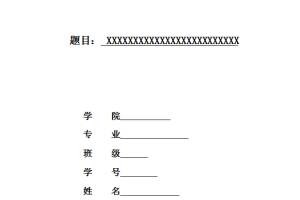品牌的规划、宣传、发展与维护是通过文化的塑造与推广实现的。OPPO手机逐渐走进了人们的视野,其产品迅速得到消费者的青睐与认可,可是其投放手机市场后,品牌的影响力不够,尤其是在国外苹果、三星等大品牌手机进军我国市场后,它们抢占先机,对国产品牌手机冲击很大,导致国产手机品牌面临的处境愈发艰难。面对优胜劣汰、适者生存的挑战,OPPO手机必须着手于品牌文化的塑造与推广,不断推陈出新,寻找合理的战略战术,确保在激烈的手机市场竞争中立于不败之地。
本文首先从品牌、品牌文化、品牌塑造及品牌推广的概念上进行了阐述,通过分析OPPO手机品牌文化塑造与推广的现状寻找OPPO手机企业在品牌经营政策上的差别;其次重点分析了品牌文化塑造及推广进程中所遇到的困难及成因;最后从OPPO手机品牌文化塑造及推广两个方面提出品牌运营的建议以及如何进行品牌文化的运营与维护,从而进一步增强OPPO手机在市场上的竞争力。
关键词:OPPO手机;品牌塑造;品牌推广
Brand planning, publicity, development and maintenance is achieved through the shaping and promotion of culture. In 2004, OPPO mobile phone into people’s vision, the product quickly favored and recognized by consumers, but its launch mobile phone market, the brand influence is not enough, brand creation and promotion of the form is very serious, especially in the apple, Samsung and other major foreign brands to enter the mobile phone market of our country, they seize the opportunity for the domestic mobile phone brand impact, resulting in the domestic mobile phone brand is facing a difficult situation. Facing the challenge of survival of the fittest, shaping and promotion, OPPO mobile phone must start with the brand culture of innovation, to find reasonable strategy and tactics, to ensure an invincible position in the fierce competition in the mobile phone market.
This paper starts from the concept of brand, brand culture, brand building and brand promotion is described, foreshadowing for the following study, then focuses on the analysis of OPPO mobile phone is now marketing situation; OPPO mobile phone in shaping brand culture and promotion in the process of the difficulties and problems and causes; finally, promotion policy and the brand operation strategy proposed in two aspects from the OPPO mobile phone and OPPO mobile phone brand culture shaping brand culture, so that the domestic mobile phone to get rid of the dilemma, so as to further enhance the domestic mobile phone brand appeal and competitiveness.
Key words:OPPO mobile phone; brand building; brand promotion
目 录
摘 要…………………………………………………………………………………………………………………… I
Abstract…………………………………………………………………………………………………………………… II
一、绪论………………………………………………………………………………………………………………… 6
(一)研究背景………………………………………………………………………………………………. 6
(二)研究目的及意义……………………………………………………………………………………. 6
1.研究目的……………………………………………………………………………………………….. 6
2.研究意义……………………………………………………………………………………………….. 7
(三)国内外文献综述……………………………………………………………………………………. 7
1.国外文献综述………………………………………………………………………………………… 7
2.国内文献综述………………………………………………………………………………………… 8
(四)研究的主要内容……………………………………………………………………………………. 8
二、手机品牌文化的塑造和推广理论基础………………………………………………………………. 9
(一)品牌概念………………………………………………………………………………………………. 9
(二)品牌的定位…………………………………………………………………………………………… 9
(三)手机品牌塑造的定义…………………………………………………………………………… 10
(四)手机品牌推广的定义…………………………………………………………………………… 10
三、OPPO手机品牌文化塑造和推广中的问题与成因分析…………………………………….. 11
(一)OPPO手机企业简介……………………………………………………………………………. 11
(二)OPPO手机品牌文化塑造与推广的现状……………………………………………….. 12
1、OPPO手机品牌市场占有率……………………………………………………………….. 12
2、OPPO手机品牌消费者关注度……………………………………………………………. 13
3、OPPO手机系列品牌形象…………………………………………………………………… 13
(三)OPPO手机品牌文化在建设中的问题与成因分析…………………………………. 15
1、重知名度而轻美誉度…………………………………………………………………………. 15
2、重销售而轻品牌………………………………………………………………………………… 15
3、热衷于广告……………………………………………………………………………………….. 16
4、品牌定位不明确………………………………………………………………………………… 17
5、没有统一的品牌核心…………………………………………………………………………. 17
6、缺少对品牌的建设维护……………………………………………………………………… 18
四、OPPO手机品牌文化塑造与推广的策略建议…………………………………………………… 19
(一)OPPO手机品牌文化塑造的策略建议…………………………………………………… 19
1、品牌定位的策略………………………………………………………………………………… 19
2、以技术为品牌价值的后盾………………………………………………………………….. 19
3、优化细分市场……………………………………………………………………………………. 20
(二)OPPO手机品牌文化推广的策略建议…………………………………………………… 20
1、将品牌与文化元素融合……………………………………………………………………… 20
2、完善传播细节……………………………………………………………………………………. 21
3、追求广告创意……………………………………………………………………………………. 21
4、借助平台进行品牌推广……………………………………………………………………… 21
5、合理使用多种媒体与多种广告形式……………………………………………………. 22
(三)OPPO手机品牌文化的运营与维护………………………………………………………. 22
1、重视品牌的维护工作…………………………………………………………………………. 22
2、全员参与品牌管理…………………………………………………………………………….. 22
3、重视销售渠道管理…………………………………………………………………………….. 22
4、构建优质售后服务…………………………………………………………………………….. 23
5、品牌战略联盟策略…………………………………………………………………………….. 23
结论……………………………………………………………………………………………………………………… 23
致 谢………………………………………………………………………………………………………………….. 24
参考文献……………………………………………………………………………………………………………… 25





